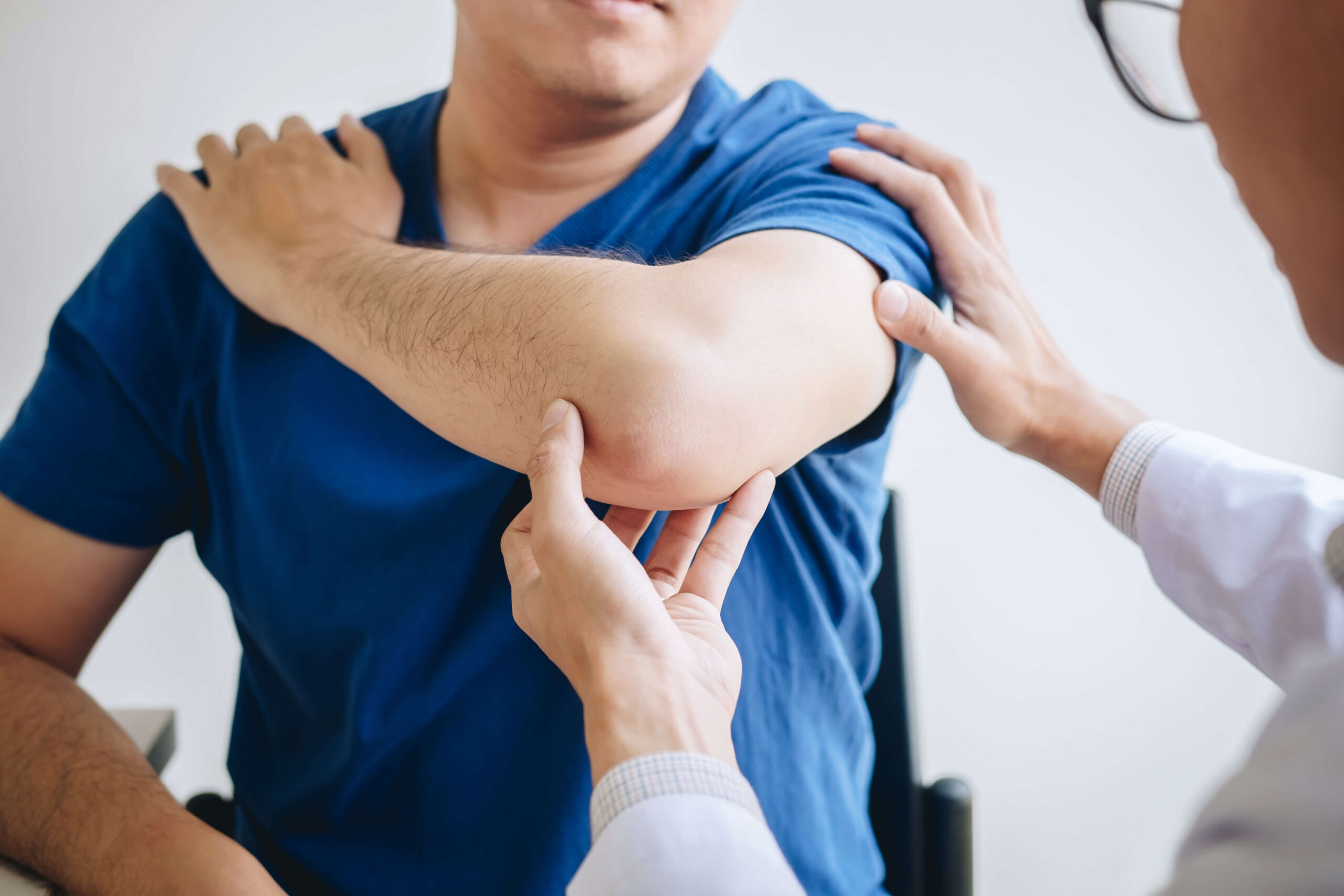Schedule An Appointment With Us
Are Your Symptoms Affecting Your Quality Of Life?
Consult our MOH-accredited orthopaedic surgeon for an accurate diagnosis & personalised treatment plan.
MBBS
MRCSEd
MMED (Ortho)
FRCSEd

Elbow instability is a condition characterised by a looseness in the elbow joint, causing symptoms such as the joint catching, popping, or sliding out of place during certain arm movements.
When the elbow experiences recurrent or chronic instability, it frequently feels as if it might slip out of place, especially when the joint is loaded. This ongoing instability can adversely impact daily activities and sports performance, leading to discomfort and limiting functional capabilities.
There are three primary types of elbow instability, each caused by specific factors:
This form typically follows a trauma, such as a fall, and can also be a consequence of previous elbow surgery or long-standing deformities.
This type also emerges from acute traumatic events. It is mostly seen in athletes engaging in repetitive throwing motions.
This usually results from a traumatic fall, leading to complex injuries involving both the ligaments and the bones.
Elbow instability often stems from specific types of injuries and stress factors.
Common symptoms and signs of elbow instability include:

The process of diagnosing elbow instability involves several steps:
Non-surgical interventions are often preferred for less severe cases of elbow instability. These treatments focus on managing symptoms and improving joint stability.
Activity Modification |
In the early stages, elbow specialists may recommend altering or limiting certain activities that trigger pain or instability in the elbow. For athletes, this might mean adjusting techniques to reduce stress on the elbow. For non-athletes, it could involve avoiding specific movements or tasks that exacerbate symptoms. |
Physical Therapy |
This involves exercises specifically designed to strengthen the muscles around the elbow joint. This strengthening aids in stabilising the elbow, improving joint function, and reducing the risk of further injury. |
Bracing |
A brace can be used immediately after an injury to provide support to the elbow. It stabilises the joint, allowing ligaments time to heal and preventing further displacement or injury. Braces are particularly beneficial in the acute phase post-injury. |
Medications for Pain and Inflammation |
Elbow specialists may prescribe pain relievers or non-steroidal anti-inflammatory drugs (NSAIDs) to help manage discomfort and inflammation. |
In cases where non-surgical treatments are insufficient or when the elbow instability is severe, surgical intervention may be necessary. Surgical options for elbow instability focus on restoring the stability and functionality of the elbow joint.
In cases where the ligament injury is relatively recent and the surrounding tissues are healthy, the elbow specialist might opt to repair the ligament using sutures. This approach is less invasive than reconstruction and can be effective for certain types of injuries.
This is a common procedure for chronic elbow instability. The surgeon replaces the damaged ligament with a tissue graft, which could be either an autograft (taken from the patient’s own body) or an allograft (donor tissue). This procedure aims to re-establish the strength and stability of the elbow joint.
Schedule An Appointment With Us
Consult our MOH-accredited orthopaedic surgeon for an accurate diagnosis & personalised treatment plan.
While it is not always possible to prevent elbow instability, certain strategies can help reduce its risk.

MBBS
MRCSEd
MMED (Ortho)
FRCSEd
With over 18 years of experience, Dr Poh Seng Yew is an orthopaedic surgeon specialising in hip, knee, shoulder and elbow surgery, sports medicine, and trauma surgery.




Weekdays: 9.00am – 5.00pm
Saturdays: 9.00am – 1.00pm
Sundays and Public Holidays: Closed
Please leave us a message, and we will be in touch with you shortly.
Participation in sports depends on the severity of the instability and the type of sport. Some individuals may need to modify their techniques or use supportive equipment. Consult an elbow specialist for personalised guidance for your specific condition.
Recovery time varies based on the individual and the specific surgery performed. A typical recovery period may range from several weeks to several months.
Elbow instability can potentially affect both elbows, although it often develops in one. Each elbow should be evaluated separately and managed through individualised treatment plans.
Try to avoid movements that exacerbate symptoms of instability. Consult an elbow specialist for guidance on how to manage your condition, including recommendations on exercises and movements to avoid.